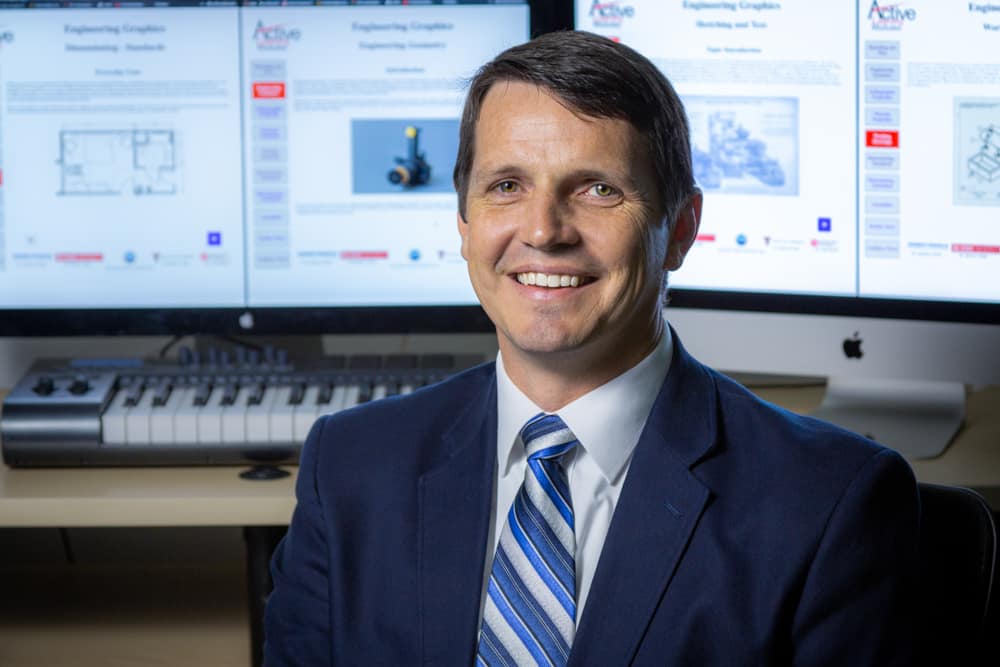Prof. Jeremy Ernst Leads Major NSF Project to Help Engineering Students Succeed

Helping more students succeed in becoming professional engineers is the goal of a $599,485 research project, funded by the National Science Foundation (NSF) and headed up at Embry-Riddle’s Worldwide Campus by Dr. Jeremy V. Ernst.
The multi-university project aims to transform rote, lecture-style educational approaches to actively engage first-year engineering students in learning. Using an “active performance-based learning” or APL framework originally developed for an engineering graphics design course at North Carolina State University, researchers will fine-tune and scale up the content. Ultimately, Ernst and his colleagues hope to share the curriculum with many other institutions across the country.
“We’re also gathering data on 1,500 undergraduate students to gauge how the active-learning approach affects students’ confidence, persistence and academic success rates,” said Ernst, associate dean for research within Embry-Riddle Worldwide’s College of Arts and Sciences. Preliminary results have shown significant increases in students’ perceptions of their capabilities in engineering as well as their visualization skills, spatial acuity, self-regulated learning and course completion dates, Ernst added.
A Nationwide Skills Gap
U.S. employers will need to fill an estimated 3.5 million highly skilled technical jobs by 2025. Yet, as many as 2 million of those positions remain unfilled for lack of qualified applicants, a recent survey found. To become engineers, students first have to survive their introductory courses. Nationwide, nearly half of those first-year engineering students change majors or drop out before graduating.
First-generation college students, minorities and females are underrepresented in STEM fields, Embry-Riddle experts have noted. Enhancing U.S. competitiveness will require broadening the science, technology, engineering and mathematics pipeline and helping more students excel in these areas. Innovative solutions to attract, maintain and prepare students for STEM careers has long been a priority for Embry-Riddle’s Worldwide Campus.
How does an active-learning approach differ from traditional engineering graphics design courses? Traditionally, for example, engineering geometry relies on mathematical figures and equations. By comparison, Ernst explained, an active learning-based course would place the mathematics into the context of real-world engineering problems.
The NSF project “is only one example of Embry-Riddle Worldwide’s leadership in instructional development and curriculum based on evidence of what works,” Ernst said. Embry-Riddle Worldwide, rated by U.S. News & World Report as offering the nation’s No. 1 online undergraduate degree programs, is continuously improving its approaches to curricula development, he added.
 Ginger Pinholster
Ginger Pinholster